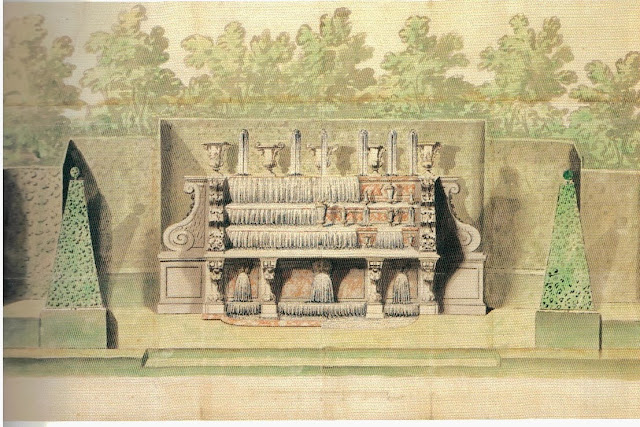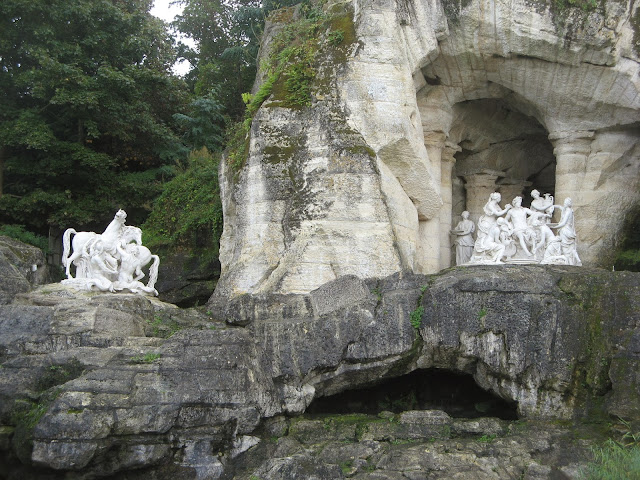Ce bosquet, que l'on appelait le Marais, fut aménagé durant le règne de Louis XIV, entre 1670 et 1673, à l'instigation de Mme de Montespan, dit-on.
En 1704, Jules Hardouin-Mansart conçut pour ce lieu un bosquet nouveau destiné à accueillir les groupes des "chevaux du soleil" et celui "d'Apollon servi par les Nymphes".
Cet ensemble fut sculpté entre 1664 et 1672 pour orner la fameuse grotte de Téthys, et lorsque cette dernière fut détruite pour construire l'aile nord du Château, on le transféra au bosquet des Dômes.
Hardouin-Mansart aménagea donc ce lieu pour mettre en valeur ces oeuvres particulièrement remarquables.
En 1776, un an après l'ordre donné par Louis XVI de replanter le parc, on demanda au peintre Hubert Robert un projet d'aménagement nouveau.
Le bosquet qu'il imagina, achevé en 1778, le fut dans le style, alors à la mode, des jardins anglo-chinois.
C'est celui qui demeure aujourd'hui.
This grove, formerly called the Marsh, was laid out during the reign of Louis XIV, between 1670 and 1673, at the request of Mme de Montespan, it is said.
In 1704, Jules Hardouin-Mansart designed for this place a new grove intended to host the groups of the "Sun Horses" and "Apollo served by the Nymphs".
These groups were sculpted between 1664 and 1672 to adorn the famous Grotto of Tethys, and when the latter was destroyed to build the north wing of the Château, it was transferred to the grove of the Domes.
Hardouin-Mansart then designed this place to highlight these particularly remarkable works.
In 1776, one year after the order given by Louis XVI to replant the park, the painter Hubert Robert was commissioned to produce a new layout.
The grove which he imagined, completed in 1778, was laid out in the then fashionable style of English-Chinese gardens.
This one has survived to our day.
 |
| Jean CHAUFOURIER/RMN |
 |
| Copyright Jean Cotelle/EPV |
 |
| Copyright Jean Cotelle/EPV |
 |
| Jacques RIGAUD/RMN |
 |
| BOSQUET DU MARAIS/Israêl SYLVESTRE/Musée du Louvre |
 |
| BUFFET D'EAU BOSQUET DU MARAIS/Anonyme |


















